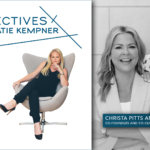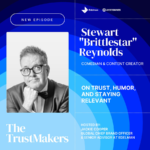By Miguel Simões, CEO, LOLA MullenLowe
Brand leaders are under pressure like never before.
Quarterly targets loom. Budgets get tighter. Every campaign is expected to do more, for less, in less time. It’s no wonder that the instinct is often to go for what’s safe, what’s quick, or what’s already been proven to “perform.”
But, here’s the challenge: You can’t build a brand that lasts by playing it safe. In a marketplace overloaded with sameness, creative ambition is no longer a luxury. It’s a business strategy.
What’s Missing: Emotion, Consistency, Conviction
Too many brands are stuck in reactive mode—chasing formats, tweaking tactics, changing their look every time the brand leadership rotates. This results in no memory structure, no emotional glue, and no real reason to choose this brand over another.
Meanwhile, the brands that outperform over time tend to share three traits:
- A distinctive emotional platform that builds memory and meaning
- A sharp, simple idea designed to last, not just launch
- The creative bravery to stay consistent, even as the world changes
These aren’t soft things. These are the drivers of long-term brand value.
Emotion Drives Effectiveness
Emotion gets results. It creates recall, builds associations, and earns attention without always needing to buy it immediately. And in a world where loyalty is fleeting and differentiation is thin, emotional connection is currency.
But emotion doesn’t come from generic campaigns. It comes from creative conviction. From ideas that are culturally sharp, humanly relevant, and beautifully made.
Craft matters. Because how something is made tells people how much it matters.
The Case for Platform Thinking
If you want consistency without rigidity—distinctiveness without repetition—you need a platform, not just a campaign. A platform gives a brand shape, holds emotional space over time, and flexes across markets and channels, while staying recognizably you.
But great platforms don’t happen by accident. They come from creative ambition paired with strategic clarity. They require craft, confidence, and a willingness to commit.
Yes, it’s harder than chasing the next shiny format. But the payoff is real—and measurable.
A Call to Brand Leaders
So what do you do with all this?
Here’s a thought: flip the script.
Instead of asking “what’s the minimum we can do to get this out the door?”—ask “what’s the sharpest, most emotionally resonant idea we can build a world around for our brand?”
Instead of saying “we need 100 pieces of content,” say “we need one platform that people will remember.”
When you invest in creative ambition, backed by emotion, consistency, and craft, you’re not just making ads, you’re building brand assets.
That’s where the real value comes.
It’s time we get back to treating brands that way.











